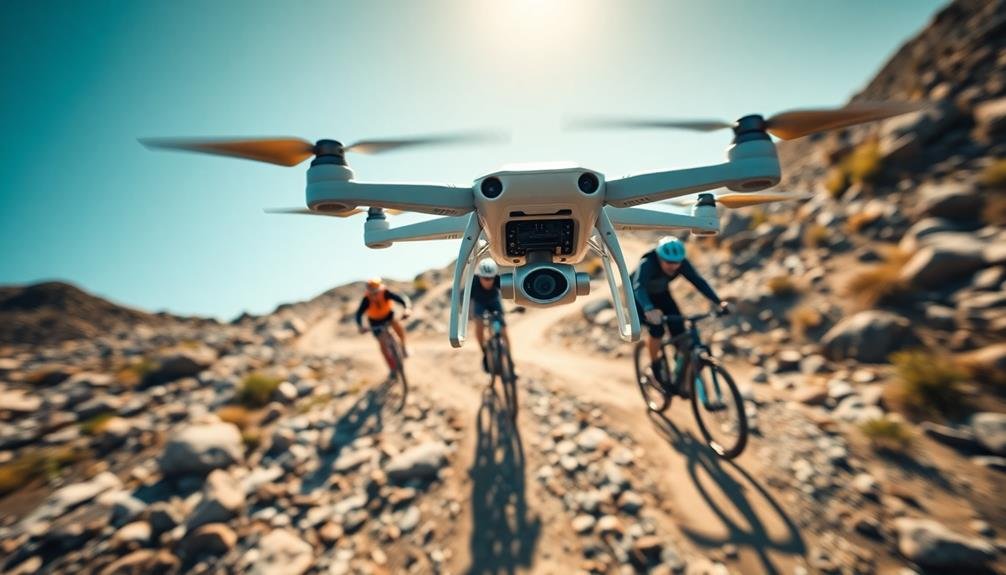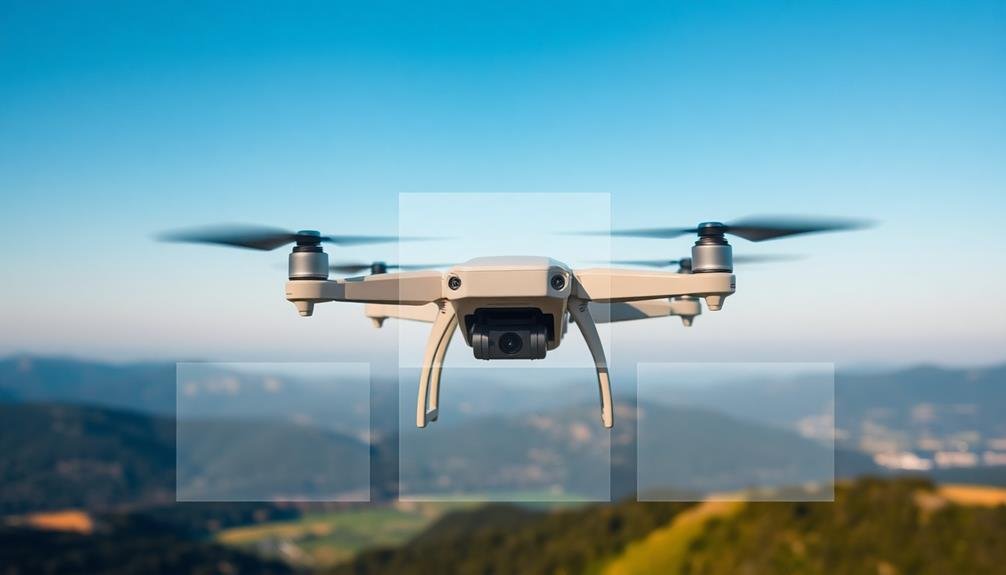When converting your drone footage, consider these three ideal frame rates: 24 FPS for that cinematic look, 30 FPS for smooth online viewing, and 60 FPS for high-action scenes. If you're aiming for a professional, film-like quality, go with 24 FPS. For general online content that balances fluidity and file size, 30 FPS is your best bet. Need to capture fast-moving subjects or create slow-motion effects? Opt for 60 FPS. Each frame rate has its strengths, so choose based on your project's needs and intended platform. Understanding these options will help you make the most of your aerial footage.
Key Takeaways
- 24 FPS delivers cinematic quality, ideal for landscape shots and professional productions.
- 30 FPS balances smooth motion with manageable file sizes for online viewing.
- 60 FPS is essential for capturing fast-moving subjects and allowing for slow-motion edits.
- Higher frame rates increase file sizes and processing requirements, so consider your equipment capabilities.
- Choose frame rate based on your footage type, intended platform, and desired visual effect.
24 FPS: Cinematic Standard

In line with cinematic traditions, 24 frames per second (fps) stands as the gold standard for drone video conversion. This frame rate has been the industry norm for decades, offering a smooth, film-like quality that viewers associate with professional productions. When you're aiming for a cinematic look in your drone footage, 24 fps is your go-to choice.
You'll find that 24 fps creates a subtle motion blur between frames, which contributes to the dreamy, cinematic feel. It's particularly effective for landscape shots, slow pans, and revealing sweeps that showcase scenery.
However, it's not ideal for fast-moving subjects or rapid camera movements, as these can appear choppy at this frame rate.
Keep in mind that 24 fps isn't just about aesthetics; it's also practical for post-production. Many editing software and color grading tools are optimized for this frame rate, making your workflow smoother.
Additionally, if you're planning to incorporate your drone footage into larger film projects, 24 fps guarantees compatibility with other cinematic footage. When you're converting your drone videos, opting for 24 fps will give you that coveted film-like quality.
30 FPS: Smooth Online Viewing

When you're targeting smooth online viewing for your drone footage, 30 fps is often the sweet spot. This frame rate offers a balance between fluid motion and manageable file sizes, making it ideal for most online platforms. It's compatible with the majority of devices and browsers, ensuring your audience can enjoy your footage without hiccups.
While 30 fps works well for general online viewing, you might consider 60 fps for fast-moving scenes or when you want to capture intricate details. Higher frame rates can provide a more immersive experience, especially for action-packed drone shots. However, keep in mind that higher frame rates result in larger file sizes, which may affect loading times and streaming quality.
Consider these factors when choosing your frame rate for online viewing:
- Your target platform's capabilities and limitations
- Your audience's typical internet speeds and device capabilities
- The nature of your drone footage (slow scenic shots vs. fast-paced action)
- Your desired balance between motion smoothness and file size
- The potential for future slow-motion edits
60 FPS: High-Action Footage

For high-action drone footage, you'll want to step up your frame rate game. When capturing fast-moving subjects or performing quick drone maneuvers, higher frame rates become vital for smooth, detailed playback. Consider shooting at 60 fps or even 120 fps to guarantee you don't miss any significant moments.
At 60 fps, you'll achieve a good balance between smooth motion and file size. This frame rate is ideal for most high-action scenarios, such as following cars, athletes, or wildlife. It allows for crisp slow-motion playback when edited at 24 or 30 fps timelines.
For extreme action or when you need ultra-slow-motion effects, 120 fps is your best bet. This frame rate captures incredibly fine details in fast movements, giving you more flexibility in post-production. However, keep in mind that higher frame rates require more light, so you may need to adjust your camera settings accordingly.
Remember that shooting at higher frame rates will increase your file sizes and processing requirements. Ensure your drone's memory card can handle the data rate and that your editing system is capable of processing the footage efficiently.
Frequently Asked Questions
Can I Use Variable Frame Rates When Filming With My Drone?
You can use variable frame rates when filming with your drone, but it's not recommended. It can cause issues during editing and playback. Stick to consistent frame rates for smoother footage and easier post-processing.
How Does Frame Rate Affect Battery Life During Drone Flights?
Higher frame rates consume more battery power during drone flights. You'll notice your drone's battery draining faster when you're shooting at higher fps. It's best to balance your frame rate needs with battery life considerations.
What's the Ideal Frame Rate for Slow-Motion Drone Footage?
For slow-motion drone footage, you'll want to shoot at a higher frame rate. Aim for 60fps or 120fps if your drone supports it. You can then slow it down in post-production for smooth, cinematic slow-motion effects.
Are There Any Drone-Specific Frame Rate Limitations I Should Know About?
You'll find most drones can shoot up to 60fps, with high-end models reaching 120fps. However, you're often limited by storage and battery life. It's best to check your specific drone's capabilities before filming.
How Do Different Lighting Conditions Impact Frame Rate Choices for Drone Videos?
You'll want to adjust your frame rate based on lighting. In bright conditions, you can use higher frame rates for smooth footage. In low light, lower frame rates allow more light in, reducing noise and blurriness.
In Summary
You've now got the inside scoop on the top frame rates for drone video conversion. Whether you're aiming for that classic cinematic look with 24 FPS, smooth online playback at 30 FPS, or capturing high-action scenes at 60 FPS, you're equipped to make the right choice. Remember, each frame rate serves a specific purpose, so pick the one that best suits your project's needs and your creative vision.

As educators and advocates for responsible drone use, we’re committed to sharing our knowledge and expertise with aspiring aerial photographers.




Leave a Reply